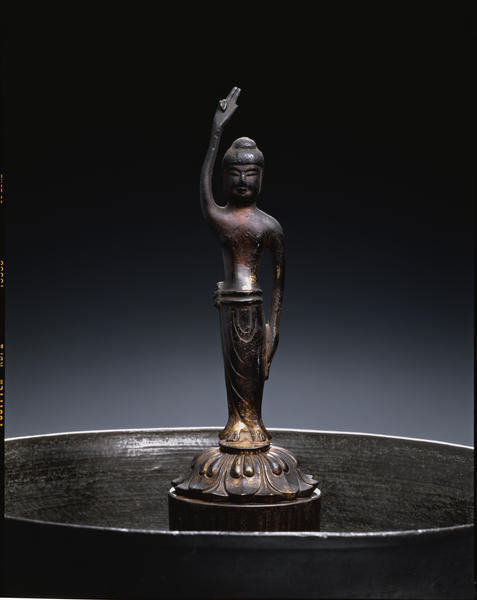Infant Buddha
- Japan
- Asuka period
- 7c
- Gilt bronze
Catalogue Entry
This figure depicts Prince Siddhartha (later Sakyamuni) just after being born to Queen Maya, when, according to legend, he took seven steps and proclaimed “Holy am I alone throughout heaven and earth.” Such depictions of the infant Buddha are the principal images for the annual celebration of the Buddha’s birthday. In this case, the head is rendered with a simple hairstyle rather than the rahotsu spiral curls common in Buddha iconography. The infant Buddha holds his right hand up above his head with just the forefinger and middle finger extended, and his left hand straight down along his side with all fingers extended. The upper body is naked, and from the waist down he wears an ankle-length kun. The face is long but its undersize nose and lips give it a babyish look that combines with the simply sculpted body to create the effect of an endearing child. Aspects such as the long kun and the shallowness of the kun folds are rare among pre-Heian works, but since childlike depictions were common in the late Asuka period (the Hakuho period), there is a possibility that this work may date as far back as that time.
